Pokémon Go Buddy: How to choose your next best friend
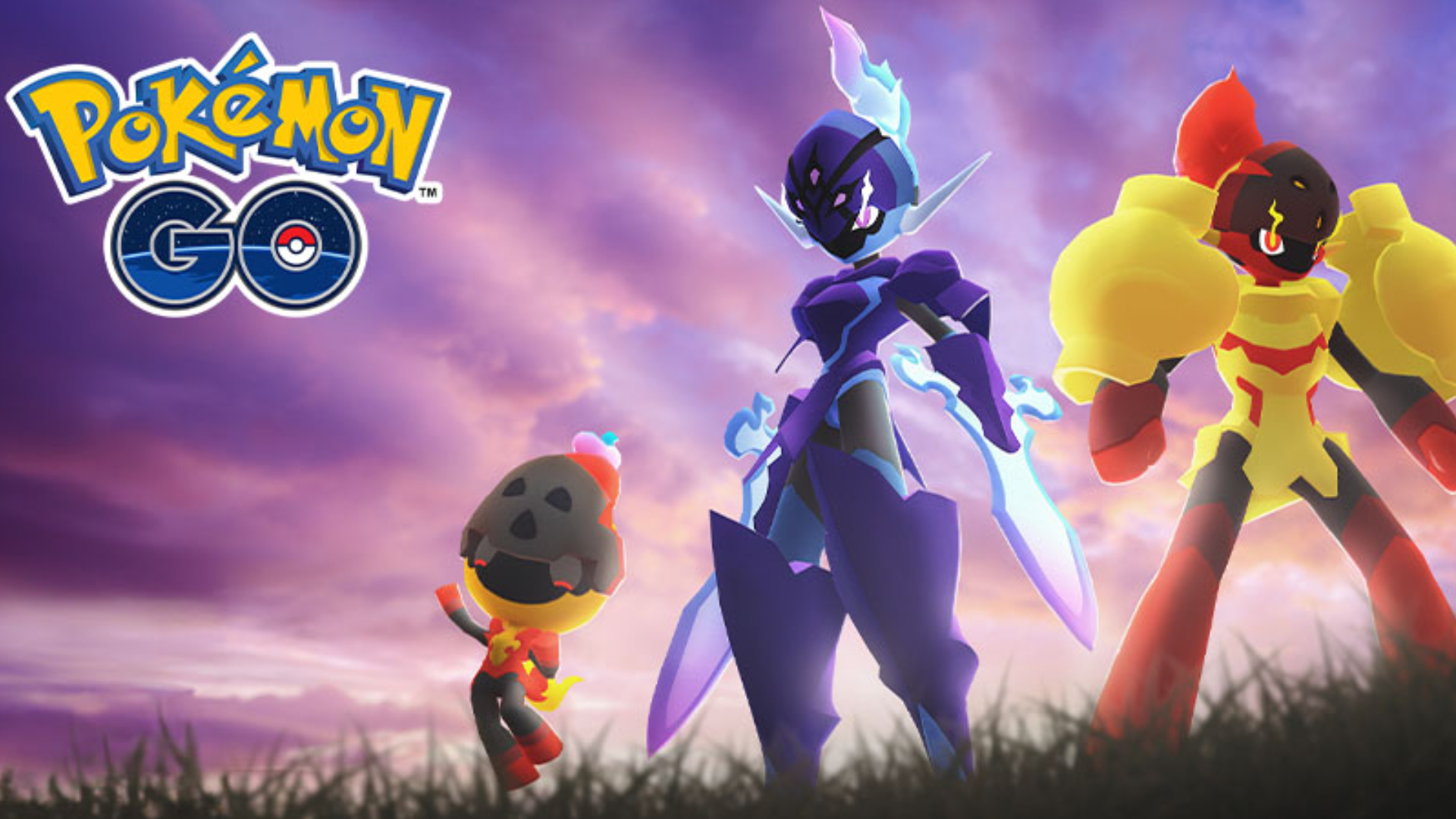
Choosing a Buddy in Pokémon Go is a very important decision to make. Much like how Ash Ketchum, the original protagonist of the Pokémon series, chose Pikachu early on, having a buddy will be crucial in earning candy and as well as building up your reputation in the game.
A Buddy Pokémon is measured in hearts and four levels of friendship:
- Good Buddy
- Great Buddy
- Ultra Buddy
- Best Buddy
Nurturing and caring for your Buddy will be crucial, as they can eventually bring gifts like Berries, Potions, and Candies to help you on your journey.
Having a Buddy Pokémon is a fun feature as you travel throughout your travels, because it'll make you wonder how the chosen Pokémon is feeling and what surprises they may find if you're far away from home.
With all this in mind, we've created a guide to help you keep your Buddy Pokémon on their good side during your adventures, as well as revealing the best Pokémon to choose as a Buddy.
Cheat sheet: Which Pokémon are the best to Buddy up?
Buddy with these Pokémon whenever possible to evolve and power up more top-tier Gym defenders and attackers:
- Chansey, so you can evolve and power up Blissey.
- Snorlax, so you can power it up.
- Magikarp, so you can evolve and power up Gyarados.
- Larvitar, so you can evolve and power up Tyranitar.
- Machop, so you can evolve and power up Machamp (with counter and dynamic punch).
- Dratini, so you can evolve and power up Dragonite.
- Rhyhorn, so you can evolve and power up Rhydon.
- Chikorita, so you can evolve Meganium.
- Cyndaquil, so you can evolve Typhlosion.
- Totodile, so you can evolve Feraligatr.
- Mareep, so you can evolve Amphoros.
- Sunkern, so you can evolve Sun Flora (with a Sun Stone).
- Togepi, so you can evolve Togetic.
- Chinchou, so you can evolve Lanturn.
- Swinhub, so you can evolve Poliswine.
- Snubbull, so you can evolve Granbull.
- Teddiursa, so you can evolve Usaring.
- Houndour, so you can evolve Houndoom.
- Marill, so you can evolve Azumarill.
- Hoppip, so you can evolve Jumpluff.
- Grimer, so you can evolve Muk.
- Koffing, so you can evolve Weezing.
Why these Pokémon? Keep reading!
iMore offers spot-on advice and guidance from our team of experts, with decades of Apple device experience to lean on. Learn more with iMore!
Wait, no evolved forms as buddies — why not?
Because then you can't use them in Gyms, which is a waste. The candy is the same regardless of whether you're using a baby, base, or evolved form. So, by making a lower form your candy, you don't take the higher form out of the game.
In other words, walk Lavitar to get candy to power up Tyranitar. Best of both worlds.
How do you add or change your Buddy Pokémon in Pokémon Go?
Here's how to choose or change your Buddy Pokémon:
- Tap the Trainer avatar button at the bottom left.
- Tap on the Menu button at the bottom right (looks like "☰").
- Tap on Buddy.
- Choose a Buddy from your Pokémon list, if you've never chosen one before. Otherwise, tap on the Change button at the bottom right.
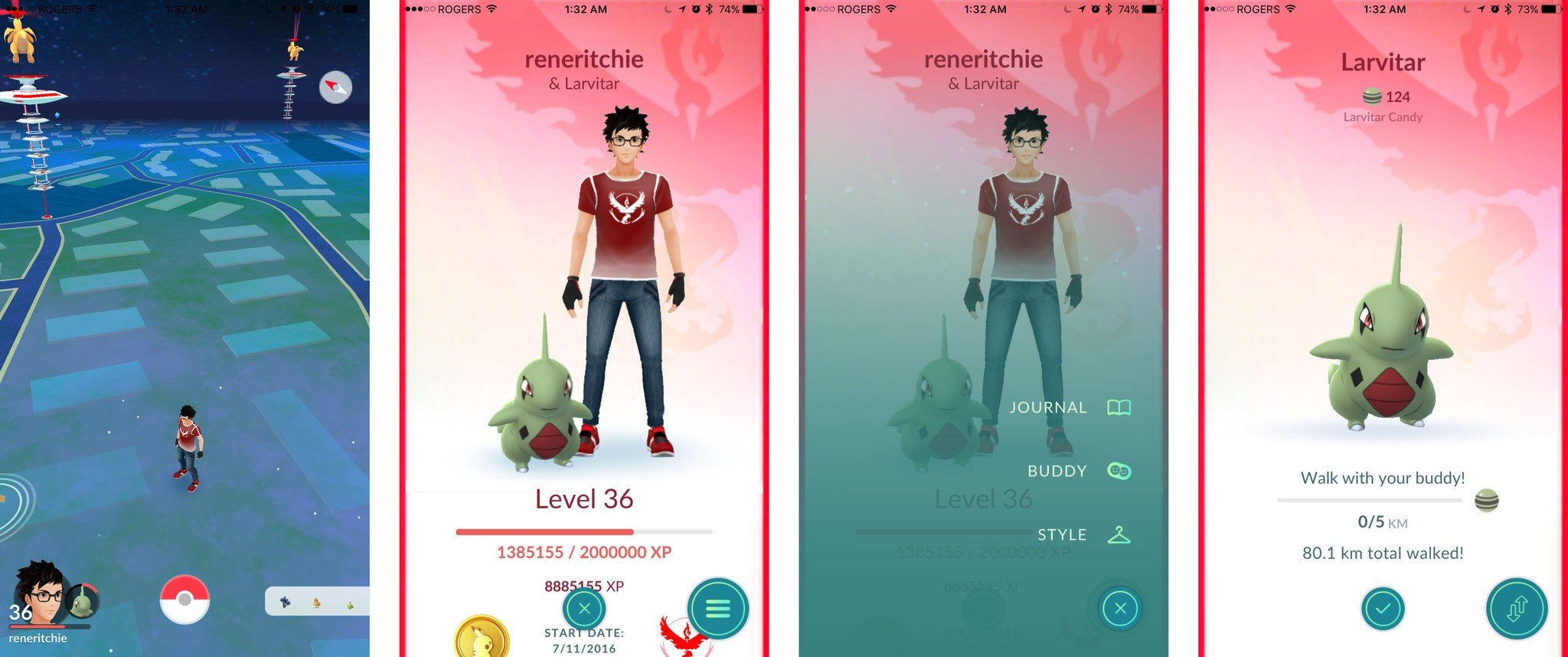
- Tap Yes to confirm.
- Choose a Buddy from your Pokémon list. (You can pick any Pokémon that's not currently assigned to a Gym.)
- Tap the OK button at the bottom middle (Looks like a "✓").
- Tap the Exit button at the bottom middle (Looks like a "X").
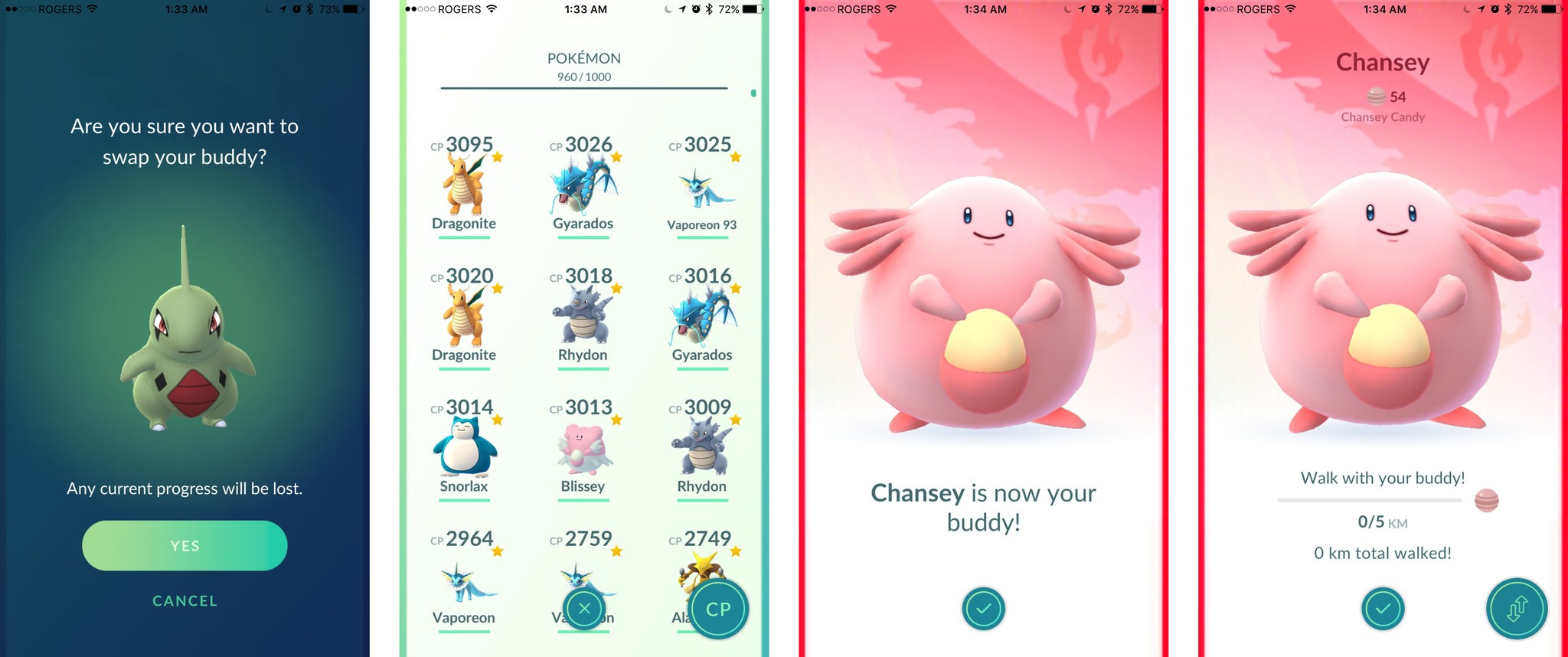
Your chosen Pokémon is now your Buddy! Though it won't walk next to you on the map — sadness! — it will have a tiny avatar to the right of your portrait, and you can tap on your Trainer screen at any time to see how far you've walked with your Buddy Pokémon, how many candies you've accumulated, and access your Buddy Pokémon's screen to quickly evolve or power up.
- Tap the Trainer avatar button at the bottom left.
- Tap on your Avatar / Buddy to shortcut straight to the Buddy screen.
- Tap on the Distance bar at the bottom to see your Buddy Pokémon's page.
- Tap on Power Up or Evolve to use your accumulated candy.
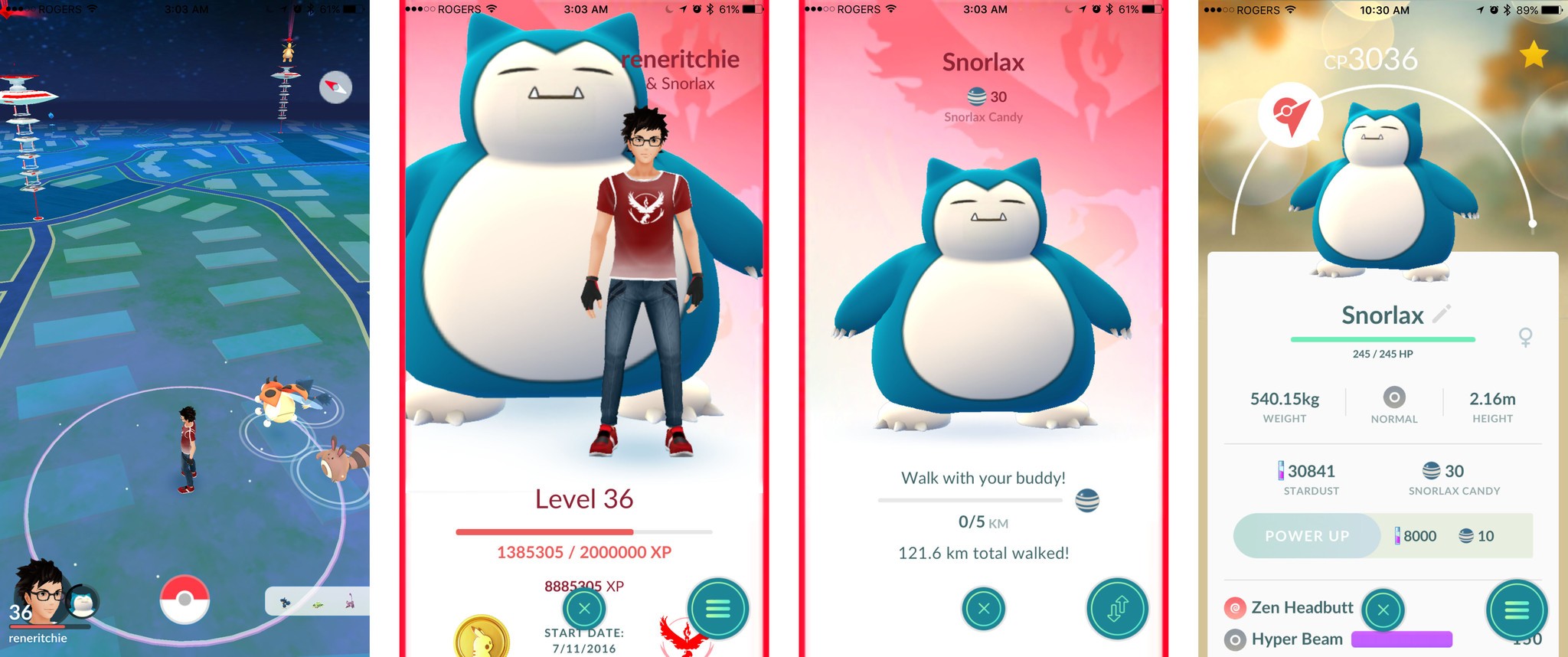
How do you remove your Buddy Pokémon?
You can't. Once a Pokémon Buddy has been chosen, it's with you forever.
How much Candy do you get for walking a Buddy Pokémon?
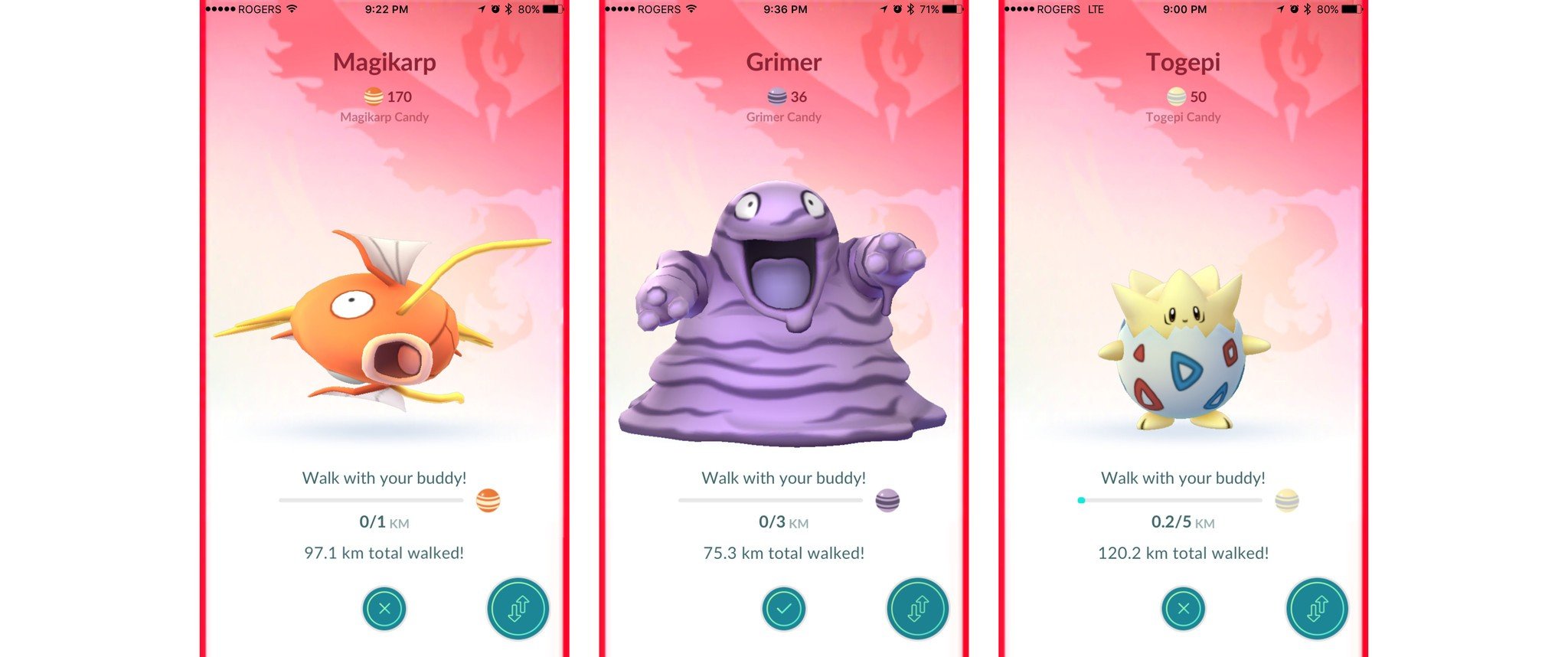
Buddy candy is based on distance. Some Pokémon require you to walk 1 KM, others 3 KM or 5 KM to earn a candy. The distances are roughly but not exactly related to the distance of the Pokémon Eggs they hatch from — 2 KM hatches tend to get a candy every 1 KM, 5 KM hatches every 3 KM, and 10 KM hatches every 10 KM, though there are some exceptions.
Here's how walking a Buddy Pokémon compares to other methods for getting Candy in Pokémon Go:
- 1 Candy per Buddy distance (1 KM, 3 KM, 5 KM) walked.
- 1 Candy per Pokémon transferred to the Professor.
- 3 Candies per base-level Pokémon caught in the wild.
- 6 Candies per base-level Pokémon caught in the wild while using a Pinap Berry.
- 5 Candies per second-level Pokémon caught in the wild.
- 10 Candies per second-level Pokémon caught in the wild while using a Pinap Berry.
- 10 Candies per third-level Pokémon caught in the wild.
- 20 Candies per third-level Pokémon caught in the wild while using a Pinap Berry.
- 5 to 15 Candies per 2 KM Egg hatched.
- 10 to 21 Candies per 5 KM Egg hatched.
- 16 to 32 Candies per 10 KM Egg hatched.
Again, walking a Buddy Pokémon isn't a fast way to get a lot of Candy but it's a consistent way to get a steady stream of Candy.
Which Pokémon are rare or impossible to catch in the wild in Pokémon Go?
Definitions vary. There are some Pokémon that are exclusive to specific regions, like Kangaskhan to Australia. I'm going to discount those immediately since none of them are top-tier Gym defenders or attackers and none have evolutions. So, I'm going to stick with Pokémon that don't nest and don't spawn frequently.
A nest is a specific place where a specific Pokémon spawns several times a day for two weeks before migrating to a new, random location. If a Pokémon nests, people will report that nest, and you'll be able to go to it and catch them, earning more Candy than you would to walk them at the same time. If the nest is too far away, you can wait the two weeks — or the remainder thereof — and hope it moves closer during the next migration.
Without nests or frequent spawns, the uncatchable Pokémon become much better candidates to walk:
- Grimer - 3 KM
- Hitmonlee - 5 KM
- Hitmonchan - 5 KM
- Lickitung - 3 KM
- Koffing - 3 KM
- Chansey - 5 KM
- Tangela - 3 KM
- Lapras - 5 KM
- Magikarp - 1 KM
- Porygon - 3 KM
- Areodactyl - 5 KM
- Snorlax - 5 KM
- Dratini - 5 KM
- Togetic - 3 KM
- Unown - 5 KM
- Pineco - 5 KM
- Manitine - 5 KM
- Skarmony - 5 KM
- Phanpy - 3 KM
- Hitmontop - 5 KM
- Militank - 5 KM
- Larvitar - 5 KM
There are some Pokémon that don't spawn in the wild at all, and so can't be caught. They're the baby Pokémon, though, and most of their base forms do nest and can be caught in the wild. So, there's no real advantage to walking them. With one exception:
- Togepi - 5 KM
Since Togetic doesn't nest and is an extremely rare spawn.
Note: While Magikarp and Dratini technically don't "nest", they can be found at water biomes along rivers, lakes, streams, piers, etc. Think of them as nests that don't migrate but spawn a variety of water-type Pokémon, sometimes hourly, and Dratini several times a week.
How to find rare Pokémon in Pokémon Go
Which Pokémon are rare or impossible to hatch from eggs?
Pokémon eggs in Pokémon Go come in four tiers, dubbed by The Silph Road researchers as common, uncommon, rare, and ultra-rare. As the names imply, you're far less likely to get rare and ultra-rare eggs than you are common or uncommon. That means, playing the odds, rare and ultra-rare are the ones you want to walk. (Since you have a higher likelihood of hatching and getting more candy faster from common and uncommon eggs.)
Some Pokémon can't be hatched from eggs at all. They've either never been able to be hatched or they were once able to be hatched but can't be any more. Either way, without eggs as a candy source, the "unhatchables" become much better candidates to walk.
Rare hatches:
- Remoraid - 1 KM
- Seel - 3 KM
- Onix - 5 KM
- Tangela - 3 KM
- Pinsir - 5 KM
- Chansey - 5 KM
- Mareep - 5 KM
- Sudowoodo - 5 KM
Ultra-rare hatches:
- Misdreavus - 3 KM
- Grimer - 3 KM
- Likitung - 3 KM
- Koffing - 3 KM
- Porygon - 3 KM
- Omastar - 5 KM
- Kabuto - 5 KM
- Yanma - 3 KM
- Wobbuffet - 3 KM
- Girafarig - 3 KM
- Dunsparce - 3 KM
- Qwilfish - 3 KM
- Shuckle - 3 KM
- Sneasel - 3 KM
- Lapras - 5 KM
- Aerodactyl - 5 KM
- Snorlax - 5 KM
- Skarmory - 5 KM
- Miltank - 5 KM
Some Pokémon don't hatch from eggs at all. Many of them are so common it doesn't matter. A few are rare enough, though, that it makes a difference:
- Zubat - 2 KM
- Horsea - 3 KM
- Magikarp - 2 KM
- Chikorita - 3 KM
- Cyndaquil - 3 KM
- Totodile - 3 KM
- Marill - 3 KM
- Hoppip - 3 KM
- Sunkern - 3 KM
- Murkrow - 3 KM
- Snubbull - 3 KM
- Teddiursa - 3 KM
- Swinhub - 3 KM
- Houndour - 3 KM
Cheat sheet
The first set are the Pokémon that dominate Gym battles as either entrenched defenders or elite attackers. In a perfect world, you want as many as possible, with the best movesets possible, powere dup as much as possible. And that takes candy. Walking any of them isn't fast, especially the 5 KM ones, but more is more and faster is faster.
- Chansey: Blissey is the toughest Pokémon in the game right now, so the more you can evolve and the higher you can power them up, the better. Since Chansey has no nests and is a rare hatch, walking can help you get the candy you need.
- Snorlax: Snorlax is almost as tough but has no lower, slightly more common form it evolves on. So, you're left with ultra rare spawns or hatches... or walking to get the candy you need.
- Magikarp: Magikarp no longer hatch so, if you're not near a water biome with frequent spawns, and you want Gyarados to sit on top of Gyms, you'll need to walk.
- Larvitar: Tyranitar is the new Dragonite, so Larvitar is the new Dratini, only it spawns and hatches far less frequently and has no water biome for you to stake out. That makes walking the only consistent way to get candy.
- Machop: Machop is the most damaging attacker against several of the most powerful defenders in the game — if you get the right moveset. That means, even though Machop nests, you might need a lot of candy to build your Machamp strike force.
- Dratini: Dratini hatches are common now and they spawn in water biomes more frequently than ever, but Dragonite is still Dragonite, and if you need candy, you need to walk.
- Rhyhorn: Rhyhorn nest and they also hatch semi-frequently, but Rhydon is still a powerhouse on Gyms so if you're havin a hard time powering it up, you can walk it off.
The second set are Pokémon you may need to evolve to complete your Pokédex. They're the ones that either don't hatch or are rare hatches, are rare spawns, or both. That's why you might want to walk them as a buddy, but only for as long as it takes you to evolve them.
- Chikorita, so you can evolve Meganium.
- Cyndaquil, so you can evolve Typhlosion.
- Totodile, so you can evolve Feraligatr.
- Mareep, so you can evolve Amphoros.
- Sunkern, so you can evolve Sun Flora (with a Sun Stone).
- Togepi, so you can evolve Togetic.
- Chinchou, so you can evolve Lanturn.
- Swinhub, so you can evolve Poliswine.
- Snubbull, so you can evolve Granbull.
- Teddiursa, so you can evolve Usaring.
- Houndour, so you can evolve Houndoom.
- Marill, so you can evolve Azumarill.
- Hoppip, so you can evolve Jumpluff.
- Grimer, so you can evolve Muk.
- Koffing, so you can evolve Weezing.
Can't you just buddy for fun?
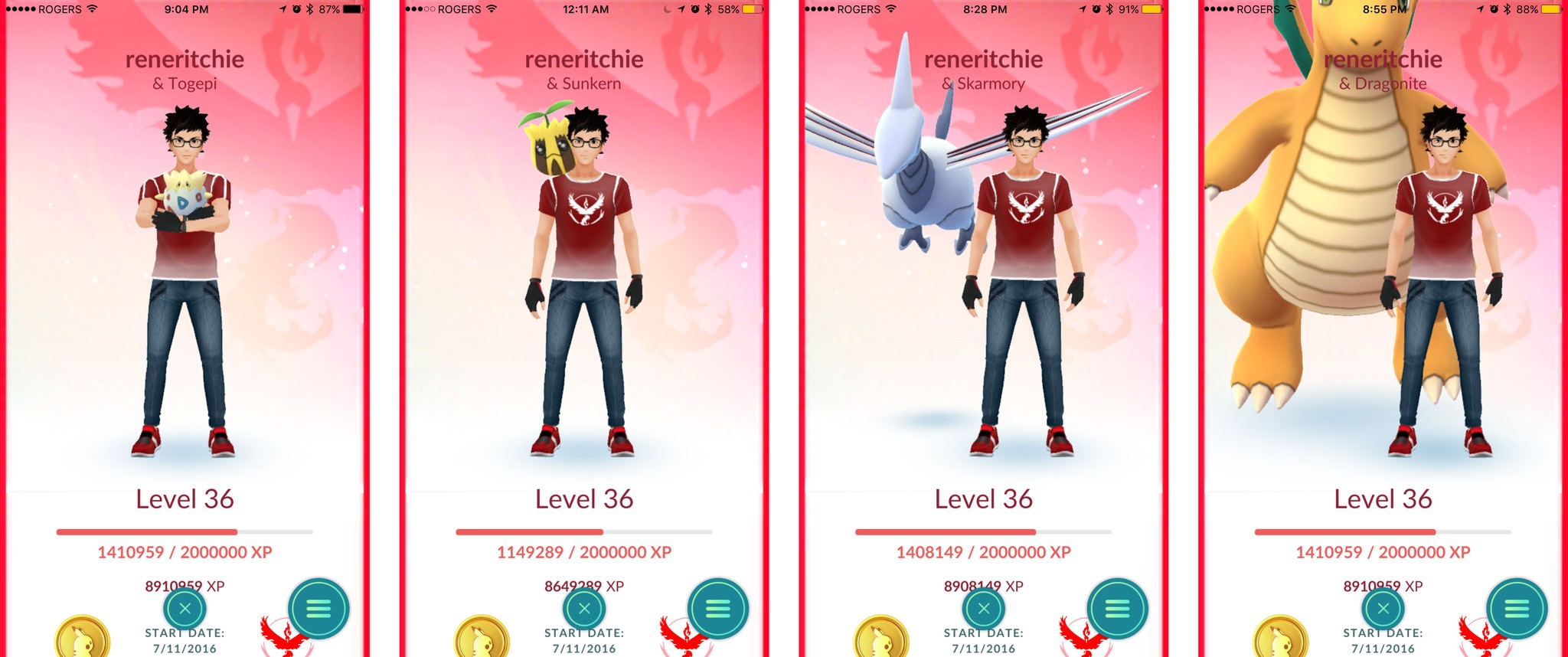
Absolutely! If you have a favorite Pokémon or one you simply thinks looks awesome as a buddy, and you don't care about Gyms or Pokédex, have at it!
- Baby Pokémon will buddy up in your arms. So. Cute.
- Small Pokémon will jump up on your shoulder. Pikachu takes 10 KM to do it, but so worth it.
- Flying Pokémon will hover over your shoulder. It''s way cool.
- Big Pokémon just look fantastic. Especially Dragonite, which barely fits on the screen.

Rene Ritchie is one of the most respected Apple analysts in the business, reaching a combined audience of over 40 million readers a month. His YouTube channel, Vector, has over 90 thousand subscribers and 14 million views and his podcasts, including Debug, have been downloaded over 20 million times. He also regularly co-hosts MacBreak Weekly for the TWiT network and co-hosted CES Live! and Talk Mobile. Based in Montreal, Rene is a former director of product marketing, web developer, and graphic designer. He's authored several books and appeared on numerous television and radio segments to discuss Apple and the technology industry. When not working, he likes to cook, grapple, and spend time with his friends and family.
